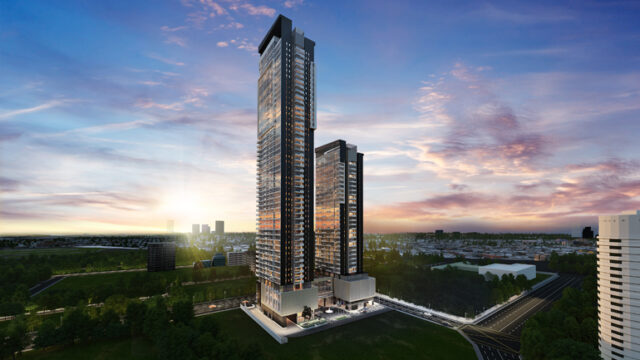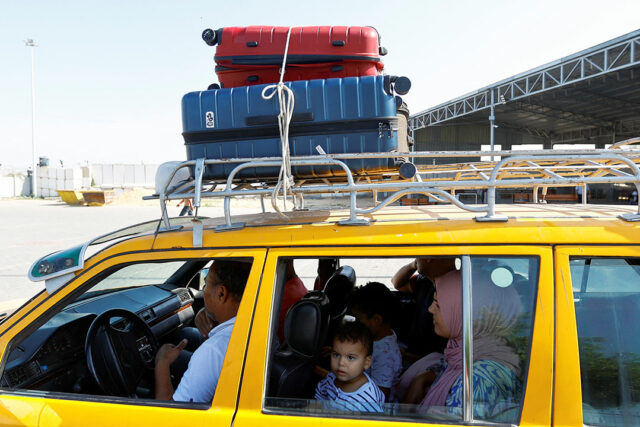The Residences at The Westin Manila: A testament to RLC Residences’ commitment to premium condo living
In the heart of the bustling metropolis of Ortigas Center, The Residences at The Westin Manila stands tall as a beacon of affluence and sophistication. Developed by RLC Residences, the residential brand of Robinsons Land Corp., in partnership with Marriott International, this upscale condominium development is a testament to the brand’s unwavering commitment to delivering top-notch living experiences, with the residents’ wellness at the forefront. From world-class amenities to exquisite design, The Residences at The Westin Manila showcases RLC Residences’ capacity to create premium condominiums that redefine urban living.
“We are very proud to finally showcase The Residences at The Westin Manila and equally excited to welcome its homeowners, especially now that we’re starting to hand over their units to them. Every time I’d go to this property, I’m still in awe of its beauty and how indulgent the whole surrounding feels. I can’t wait for the residents to experience the same pride we feel, whenever they walk into their new home in the city,” says Karen Cesario, Marketing Head and Chief Integration Officer of RLC Residences.

Luxurious Living Spaces
Designed for discerning homeowners in search of an upscale home in the city, The Residences at The Westin Manila boasts a collection of meticulously designed living spaces that epitomize opulence and comfort. The generously-spaced condominium units of the property are adorned with high-quality finishes and branded appliances and deliverables that blend form and function seamlessly. The spacious layouts and floor-to-ceiling windows provide breathtaking views of the city skyline, creating a sense of openness and connection to the vibrant energy of Manila.
“We partnered with reputable local and international consultants and experts to bring The Residences at The Westin Manila to life. During the design process, we ensured that each space and features of the property are outfitted with the finest details with comfort and convenience in mind,” shares Stephanie Anne Go, Head of Business Development and Design of RLC Residences.

Hotel-Like Amenities
One of the hallmarks of RLC Residences is its dedication to providing residents with a lifestyle attuned to their needs. The Residences at The Westin Manila is no exception, offering an array of above-standard amenities that mirror the Westin lifestyle found in properties abroad.
The Sky Lounge, perched at the 51st floor, provides a sophisticated venue for social gatherings or quiet reflection with panoramic views of the city. The four-level of amenities called The Haven features business, fitness, and leisure facilities such as Tee on Third, Indoor Lap Pool, and Wine Room, allowing residents to rejuvenate and unwind in the midst of a dynamic urban environment.

Strategic Location
Beyond the lush interiors and exceptional amenities, The Residences at The Westin Manila benefits from its strategic location within the dynamic cityscape of Metro Manila. Situated in the heart of Ortigas Center, residents enjoy convenient access to commercial hubs, cultural institutions, and recreational venues.
“We at RLC Residences understand the significance of location in creating premium living spaces such as The Residences at The Westin Manila. This project not only provides a luxurious sanctuary but also ensures that residents are well-connected to the pulse of the city. That’s why our newly-launched premium developments are also within sought-out addresses that connect them to places and opportunities that matter,” Ms. Cesario adds.
As the demand for premium living experiences continues to grow, RLC Residences remains at the forefront of the real estate industry, setting the standard for excellence in condo development. Just this year, RLC Residences launched two new premium developments — Le Pont Residences in Bridgetowne, Pasig City, and Mantawi Residences situated along Ouano Avenue in Mandaue City, Cebu.
Learn more about The Residences at The Westin Manila and other premium condominium developments by RLC Residences by visiting rlcresidences.com or following them on Facebook, Instagram, and YouTube.
Spotlight is BusinessWorld’s sponsored section that allows advertisers to amplify their brand and connect with BusinessWorld’s audience by enabling them to publish their stories directly on the BusinessWorld website. For more information, send an email to online@bworldonline.com.
Join us on Viber at https://bit.ly/3hv6bLA to get more updates and subscribe to BusinessWorld’s titles and get exclusive content through www.bworld-x.com.











 The global market for influencer marketing was valued at $16.5 billion in 2022 and is expected to multiply 12 times to $199.6 billion by 2032, growing at a compound annual growth rate of 28.6%, according to Allied Market Research.
The global market for influencer marketing was valued at $16.5 billion in 2022 and is expected to multiply 12 times to $199.6 billion by 2032, growing at a compound annual growth rate of 28.6%, according to Allied Market Research.